Introduction
I could have started this article by showing you beautiful examples of fractals, found in nature or invented by mathematicians, in two or three dimensions, constructed deterministically or not. But I won’t. In fact, you wouldn’t need to read this article to find such examples. I’d rather start by telling you a story.
It all started when someone called Lewis Fry Richardson decided to study the relation between the length of the common border between two countries and the probability that they go at war some day. While collecting data about country borders he realized that the length of those borders seemed to be very variable. For instance, he found that the length of the coast of Britain varied from single to double when the unit of measure decreased. He eventually came up with the following observation:
The logarithm of the length of the coast of Britain is proportional to the logarithm of the precision of the measure of this length, the proportionality constant being negative.
Enough with coastline now, we are not geographers. We want to discuss mathematics here. So now, we are going to talk about dimension. And as things would be too easy if every word had a single definition, we will give you three different definitions of what the dimension of a set is.
Talking about dimensions
Algebraic dimension
Algebraic dimension is the most used mathematical definition of dimension and is what one usually refers to when saying dimension without further specification. Mathematically, the algebraic dimension of a vectorial space is the cardinality of its bases. In other words, it’s the number of coordinates we need to identify a point in the space. The Euclidean world in which we are living is of dimension 3 (if we don’t bother with time…). The set of real numbers is of dimension 1 and a plane of dimension 2.
Topological dimension (Lebesgue covering dimension)
You may have noticed that when defining the algebraic dimension of a set, we assumed that this set was a vectorial space. In fact there is no need for a set to be a vectorial space in order to define its dimension. There is a definition of the dimension of a set, which only requires it to be a topological space. It is called the topological dimension and it coincides with the algebraic dimension in the case of a vectorial space.
Basically, a topological space has a dimension n if for every finite open cover A of it, there is a finite open cover B which refines A such that no point of the set is included in more that n + 1 element of B.
This definition might not be very intuitive for the reader, so we are going to explain it with a picture in the case of a circular line.
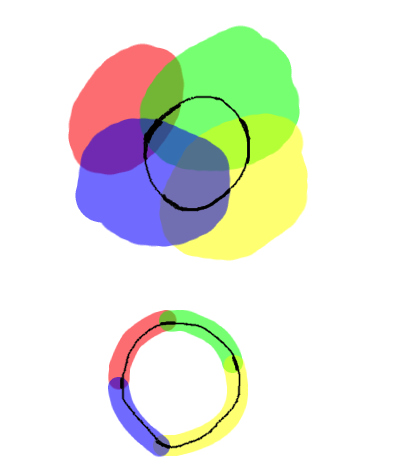 |
The four colored sets in the top picture on the left form a finite open cover of our circle: they are open, in finite number and every point of our circle is included in at least one of those sets.On the second picture, the four colored sets are a refinement of the previous ones: each one of those sets is included in one of the previous picture. In this second picture, we can see that no point of the circle is included in more than two colored sets.If we admit that this construction can be made for every open cover of our circle, then we obtain a topological dimension of 1 for our circle. |
Hausdorff dimension
Last but not least, we are going to introduce a third definition of dimension, which holds in the case of a metric space. For convenience, we will only define it in the case of a compact metric space though it can be defined for any metric space.
The Hausdorff dimension of a compact metric space is the infimum of the set of positive real numbers s such that the minimal number N(r) of balls of radius r we need to cover the whole space satisfies the following relation:
This definition might seem tough to understand, but it can be explained easily with some examples. For instance, consider a segment of length 1. The minimal number of open balls of radius r we need to cover it is Floor(1/r). We can easily deduce from this that the Hausdorff dimension of this segment is 1 (which is also its topological dimension by the way).
Defining fractals
So far, I told you about the length of Britain’s coast which was growing exponentially as the unit of measure decreased. Then I told you about three different definitions of the dimension of a set, one which holds for vectorial spaces and which is the most commonly used, one which holds for any topological space and a last one which holds for metric spaces. At this point, you must be wondering where we are going with it. Well, we’re now going to define fractals so that it all becomes clear.
Benoît Mandelbrot, which is the first to have used the word « fractal » in 1975 defines it this way:
A fractal is a set for which the Hausdorff dimension strictly exceeds the topological dimension.
The Cantor set
A classical example of fractal is the Cantor set, which is constructed by removing the middle thirds of a segment and then repeating this on each of the remaining segments and so on as illustrated below:
The Cantor set is the set of numbers in the segment [0; 1] which belong to each iteration of this process (it is the limit set on the picture above). It is easy to see that the numbers which are in the Cantor sets are those which representation in base 3 does not have any 1: numbers strictly between 0.13 and 0.23 = 0.1222222222…3 are removed in the first iteration, those with a 1 in second position are removed in the second iteration and so on. From this fact, we can deduce that for every segments obtained in iterations of the process, the extremity of the segment belong to the Cantor set (the reader could check that the extremities are the number 0.03, 0.13 = 0.0222…3, 0.23, 13, 0.01=0.00222222…3, 0.023, … i.e. numbers without 1 and which have a ternary decomposition either with a finite number of digits or ending by 222….
There are many interesting things to say about the Cantor set. Let’s for example apply what we learned before and calculate its topological and Hausdorff dimension.
The topological dimension of the Cantor set
For every n, the n-th iteration of our construction consists in 2n disjoint segments of length 1/3n. For any open cover of the Cantor set, taking the intersection of the cover and the segments of the n-th iteration for sufficiently large n would give us a refinement composed of open sets which intersections are empty. This proves that the topological dimension of the Cantor set is 0.
The Hausdorff dimension of the Cantor set
If one wants to cover the Cantor set with segments of radius 1, one segment is needed. If one wants to cover it with segments of length 1 / 3, then two segments are required (remember that the extremities of each segments of the iterations are included in the Cantor set). If one wants to cover the Cantor set with segments of length 1/3n, then 2n segments are required. Based on this, we can deduce that the number of segments of length r required to cover the Cantor set behaves like r-(ln 2/ln 3). Which gives us a Hausdorff dimension for the Cantor set equal to:
(Oh by the way, had you noticed that the definition of the Hausdorff dimension allows it to be a non-integer positive number? )
Well that proves that the Cantor set is a fractal according to Mandelbrot’s definition: its Hausdorff dimension strictly exceeds its topological dimension.
The Koch snowflake
The Cantor set is a beautiful mathematic object, but as its measure is 0 it would be hard to draw and observe it. We are now going to introduce another famous fractal known as the Koch snowflake. As the Cantor set, it is defined as the limit of iterations of a single process. The picture below is sufficient to describe the iterations:
| The Koch snowflake’s construction starts with a triangle. At each step, each segment is replaced by four segments having a length of one-third of that of the initial segment. |
The demonstration of the following results is left to the reader.
The Koch snowflake has a topological dimension of 1 and a Hausdorff dimension equals to ln 4/ln 3 ≈ 1.26. This makes it a fractal according to Mandelbrot’s definition.
Back to Britain…
By now, the discerning reader will have noticed the similarities between the fractal objects described above and the coast of Britain which we mentioned at the beginning.
If not, look at this example of a coastline:
Coastlines are objects very similar to Koch snowflake (which is also known as the Koch island by the way).
Self-similarity
When zooming on a coastline, you will notice some recurring patterns corresponding to irregularities along the coast. The picture above is taken from high attitude (probably 10 000 km or so), although it would not look very different seen 500 meters above sea level. This is a very common property of fractals, to have similar patterns at different scales. If we look back to the Koch snowflake, we can see in the animation below that it looks exactly the same when zooming-in continuously.
We can infer from those similarities that Britain’s coastline could be a fractal. Since its topological dimension is 1 (*), this means that is should have a Hausdorff dimension strictly greater than 1.
If we remember the observation of Lewis Fry Richardson, we know that the measured length of the coast can be expressed as:
N(D) being the number of segments of length D we put along the coast to compute its length. This means that:
This explicitly shows that a is the Hausdorff dimension of the coast. Remember that Richardson found this formula based on measure of the coast he found in literature. He was able to give the following estimation:
a ≈ 1.25
This experimental result means that, at the different scales which were used to measure its length, the coast of Britain is similar to a fractal which dimension is 1.25, very close to the Koch snowflake.
More fractals: an introduction to Mandelbrot and Julia sets
I could not end this article without talking about Mandelbrot set. Mandelbrot was a famous french mathematician who studied fractals and whose name was given to a set of complex numbers he studied in particular.
Let c be a complex number and consider the recurring sequence of complex numbers defined by:
The Mandelbrot set is the set of complex numbers c such that the sequence defined above is bounded. This is what it looks like:
It is easy to show that this set is included in the closed disk of radius 2 and center 0, but the real structure of the Mandelbrot set is not easy to determine.
Actually, one way of plotting it is to compute the first N values of the (zn) sequence for some value of c and to assume that c belongs to the Mandelbrot set if their absolute values stay below 2. The first picture of what the Mandelbrot set looks like was obtained this way.
The Julia sets are closely related to the Mandelbrot set. They are defined using the same recurring formula, the Julia set Jc being the set of values of z0 such that the sequence is bounded.
The picture below represents the Julia set for c = -0.4 + 0.6i. The discerning reader will notice that this set is not connected.
There are several interesting results about the Mandelbrot set, and even unanswered questions, for example:
- The Mandelbrot set is connected (Mandelbrot first thought that it wasn’t, misled by an imprecise computer representation)
- It is not known whether the Mandelbrot set is locally connected (MLC conjecture)
- The Mandelbrot set is exactly the set of complex numbers c such that the Julia set Jc is connected
- The Hausdorff dimension of the boundary of the Mandelbrot set is 2 (Mitsuhiro Shishikura, 1998)
Conclusion
Let’s sum up what you’ve learned here. You learned that there are some mysterious mathematical sets called fractals, which can be defined as those which have there Hausdorff dimension exceeding their topological dimension. You have seen how this explains why measures of Britain’s coast vary so much from one another. We constructed together four different kind of fractals. But still, there are many famous fractals we did not mention.
For those of you who want to go further, I recommend to have a look at L-systems or strange attractors. If you are familiar with probabilities, you could also have a look at some results about the Hausdorff dimension of a Brownian motion trajectory, which is an example of a randomly generated fractal. This paper about fractal analysis of electro-magnetic signals for earthquake detection is also worth-reading, if you are interested in practical applications of fractals.




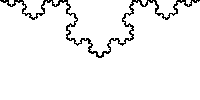

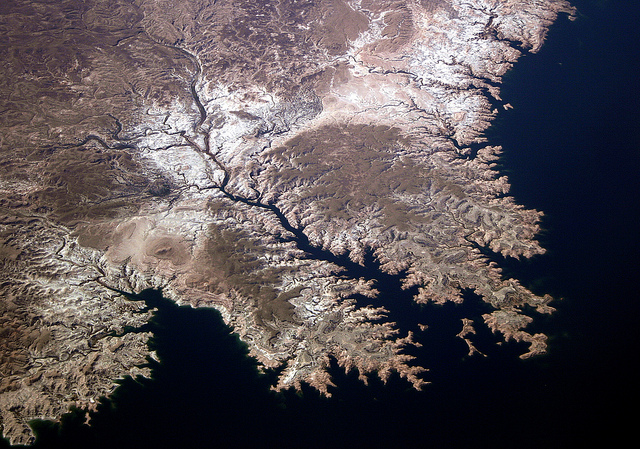

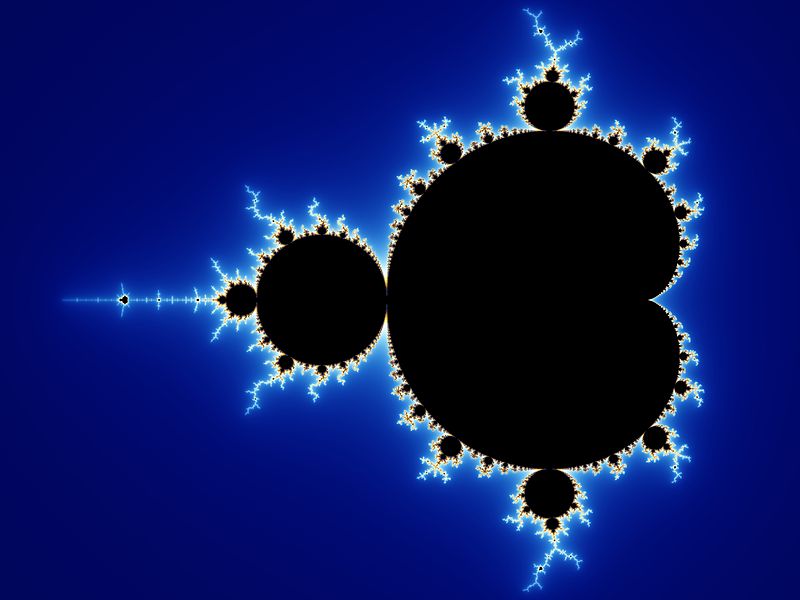
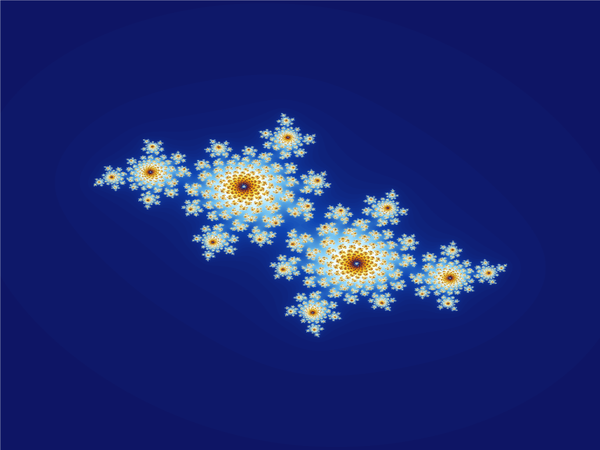
Nice article ! The subject of fractals is widely treated on the web, but it often reduces to showing nice pictures. Here, the approach is interresting and seems quite original to me.
But what the hell is the real length of the british coast !? I think it would be good to notice that the measure of the length tends to infinity while precision of the measure increases. Hence there is no “good” way of measuring the length of the coast, appart from talking about fractals. This is to me a very interesting point : though a fractal is a “limit set” that might only be an abstract mathematic object, the notion is necessary to describe a natural reality. One cannot simply say “let’s just take D small enough and we have a good approximation of the length”.
Also, just a detail (bzzzt) : you say ” [autosimilarity] is a very common property of fractals “, but according to your definition, there is no reason for which a fractal sould be autosimilar. It would be more accurate to state the converse : “an autosimilar object is very likely to be a fractal”.
Hi Nicolas,
you’re right, there is no reason why a fractal object should be self-similar according to my definition.
However, I wouldn’t say that the converse is more accurate (a line segment is self-similar but is not a fractal).
Actually, it looks like we always have to either use a recursive definition – which implies some kind of self-similarity – or use a random process to construct such a complex object as a fractal in a single finite sentence, but I might be wrong…
Great article!
I’d like to add a few questions/remarks:
1) From your definition of fractals, there exists fractals that don’t have a recursive definition nor a random process. How to construct them is another issue.
2) It looks like the integer part of the Hausdorff dimension is equal to the topological dimension. Is it always the case?
3) Can the relation N(D) \approx D^{-a} be generalized for any fractal of dimension a? I guess D would be the diametre of some balls, but I’m not sure about the dimension of the balls to consider. In Cantor set, we might do that with balls of diameter 1, but I guess that for fractals of dimension higher than 2, we cannot use such balls. Do you know something about that?
Thanks again for the article. It’s a great article!
Thanks Lê,
on your point 3, the balls to be considered are those associated to the distance of the metric space the fractal is defined in (http://en.wikipedia.org/wiki/Ball_%28mathematics%29#Balls_in_general_metric_spaces).
Your question 2 is a good question, I think it is not the case because the Hausdorff dimension of the trajectory of a Brownian motion in dimension >= 2 is always 2, but I think its topological dimension is 1… (you can read http://www.stat.berkeley.edu/~peres/bmall.pdf for the first result… I didn’t)
That’s why I suggested “very likely” : if the self-similarity property is that your object contains N copies of itself that are M times smaller, then it is of Hausdorff dimension log N / log M, which is not an integer unless N is a power of M.
I’ve just found this great video on fractals: http://www.youtube.com/watch?v=LemPnZn54Kw.